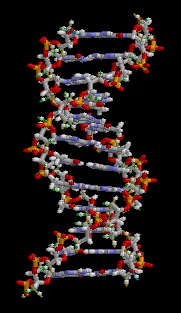Researchers identify rare shared genetic mutation for disease in Inuit
A team of Canadian and Japanese researchers has identified the genetic mutation responsible for glycogen storage disease type IIIa in Inuit in northern Quebec and they report their findings in CMAJ (Canadian Medical Association Journal). The paper identifies a mutation in the gene encoding the glycogen debranching enzyme (AGL), which had previously been undetected in a decade of investigation by the same authors.
Glycogen storage disease type IIIa is an inherited metabolic disorder that interferes with the body’s ability to release sugar from glycogen for energy; consequently, excessive glycogen deposits can damage the liver, heart and skeletal muscle. Symptoms include recurrent low blood sugar levels (hypoglycemia), enlarged liver and muscle weakness. Glycogen storage disease IIIa affects about 1 of 100,000 people in North America.
The researchers conservatively estimate that about 1 in 2,500 people in Nunavik may have glycogen storage disease type IIIa. The mutation described in this population has been previously reported in 12 North African Jewish patients but never in North American children.
Using modern genetic technology, researchers conducted whole-exome sequencing of the DNA in two young Inuit children living in remote villages in Nunavik on the eastern coast of Hudson’s Bay. Both children were homozygous for the same mutation — that is, their parents each carried a single copy of the same genetic change. Another three affected children had the same homozygous mutation confirmed using standard DNA sequencing methods. All five children had enlarged livers and hypoglycemia. All the children had the same mutation, and five family members were carriers; additional genetic testing showed much shared genetic material, likely reflecting a founder effect.
“This discovery will help interested families and communities receive genetic counselling and screening to help identify and manage the disease,” says Celia Rodd from the Department of Pediatrics and Child Health at the University of Manitoba. “Early diagnosis may help prevent hypoglycemia and organ damage in infants and serious health complications.”
The researchers suggest that early screening, including genetic testing of family members of affected children, may detect the disease in people who were asymptomatic as babies. More important, targeted newborn screening in this population may detect disease early, potentially reducing the impact of newborn hypoglycemia and glycogen accumulation.
The study was conducted in collaboration with FORGE Canada (Finding of Rare Disease Genes in Canada) and researchers from Department of Pediatrics and Endocrine Genetics Laboratory, Montreal Children’s Hospital, McGill University; Okinaka Memorial Institute for Medical Research in Tokyo, Japan; and the Department of Pediatrics and Child Health, University of Manitoba.
In a related commentary, Jane Evans, Professor Emeritus of Biochemistry and Medical Genetics at the University of Manitoba, writes: “Awareness of such variation in distribution of disease has allowed an important preventative health strategy: using ethnic background to identify people who should be offered screening for conditions such as sickle cell anemia, thalassemias and Tay-Sachs disease….
“Once a causative mutation is discovered, opportunities exist to use molecular rather than more invasive diagnostic testing, to start treatment early and to offer carrier testing to family members at risk.”
For more informations, please contact Melni Ghattora, Communications officer, College of Medicine, Faculty of Health Sciences, University of Manitoba, Winnipeg, at 204-272-3110, melni.ghattora@med.umanitoba.ca for Dr. Celia Rodd
or
Josianne Vignola, Montreal Children’s Hospital, Montréal, Quebec, at 418 525-4444 x16208, josianne.vignola@chuq.qc.ca for Dr. Isabelle Rousseau-Nepton.
Error thrown
Object of class WP_Error could not be converted to string







